The Great Fire Destroys Academic Hall, Elephant Survives
On January 9th, 1892, the greatest catastrophe to ever transpire in Columbia occurred when an extraordinary fire at the University of Missouri consumed Academic Hall. Far more than a building was lost, but through heroic effort, a few artifacts were saved. The disaster nearly resulted in the university moving from Columbia. Instead, a renaissance occurred through the leadership of a few men, and an act of profound historic preservation gifted the school and city their most iconic symbol.
Academic Hall was built from 1840-1843 on land donated by James S. Rollins as the university’s first building. Its architect was Stephen Hills, an Englishman who immigrated to Boston in 1794. He had already designed Pennsylvania’s original State Capitol Building in 1819, and the first Missouri State Capitol in 1837. Sadly, it appears none of Hills’ architecture survives; the three mentioned were all destroyed by fire. A surviving courthouse in Lebanon, Pennsylvania stood for 148 years, until it was demolished in 1965. It is likely that in 2023, The Columns on Francis Quadrangle are the only surviving specimen of his work.
As the University of Missouri’s only building for many years, it was the focal point of all administrative, student, and faculty activities, as well as Columbia’s largest building. It was three stories and a basement, with a great domed rotunda on top. The Columns supported the portico, a front entrance facing the city of Columbia. Inside there was a chapel, library, offices, and classrooms. The brick used was fired on campus from clay, a common soil in Missouri. The limestone used was quarried near Hinkson Creek south of the city, the quarries can still be seen on Rock Quarry Road; the stone was hauled by ox-drawn carts. The lumber was likely from nearby old growth forest.
Academic Hall was greatly expanded in 1885 by the addition of East and West wings. St. Louis architect Henry William Kirchner and Fulton architect Morris Frederick Bell collaborated on the addition. Morris Frederick Bell would later become the architect of Jesse Hall and the Quadrangle after the fire. Below is a curated gallery, from MU in Brick and Mortar and other sources, of the best surviving images of Academic Hall.
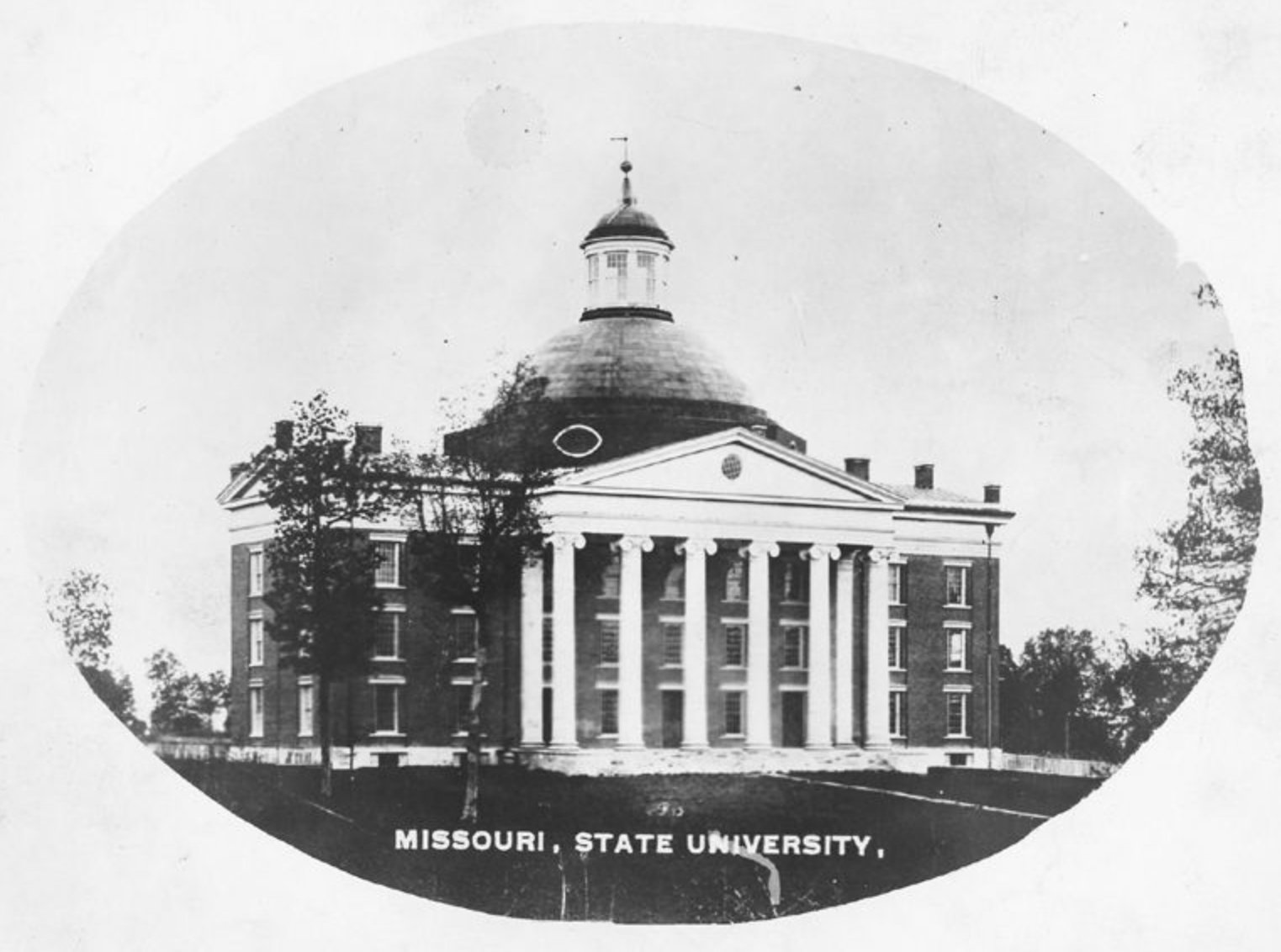
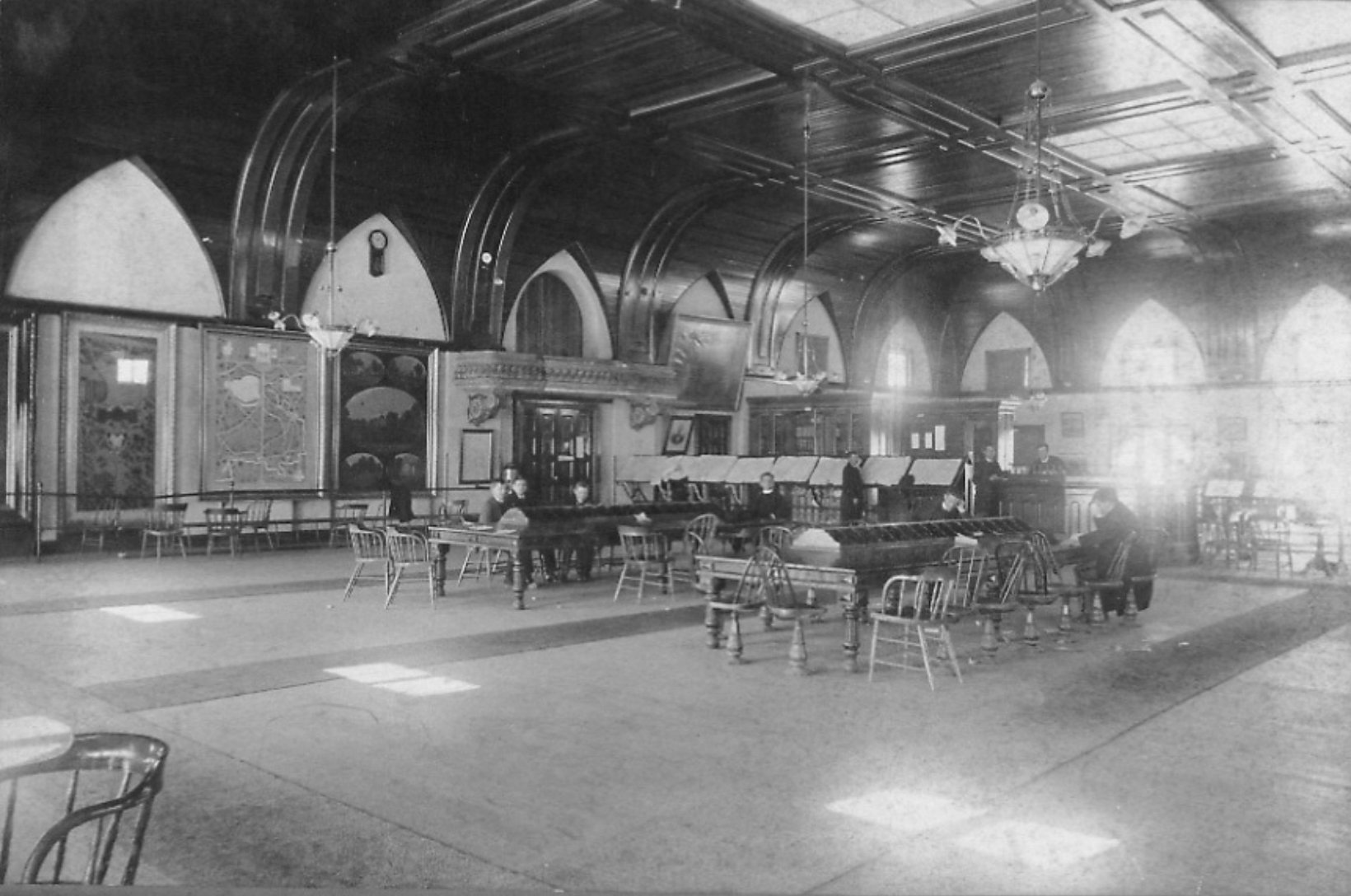
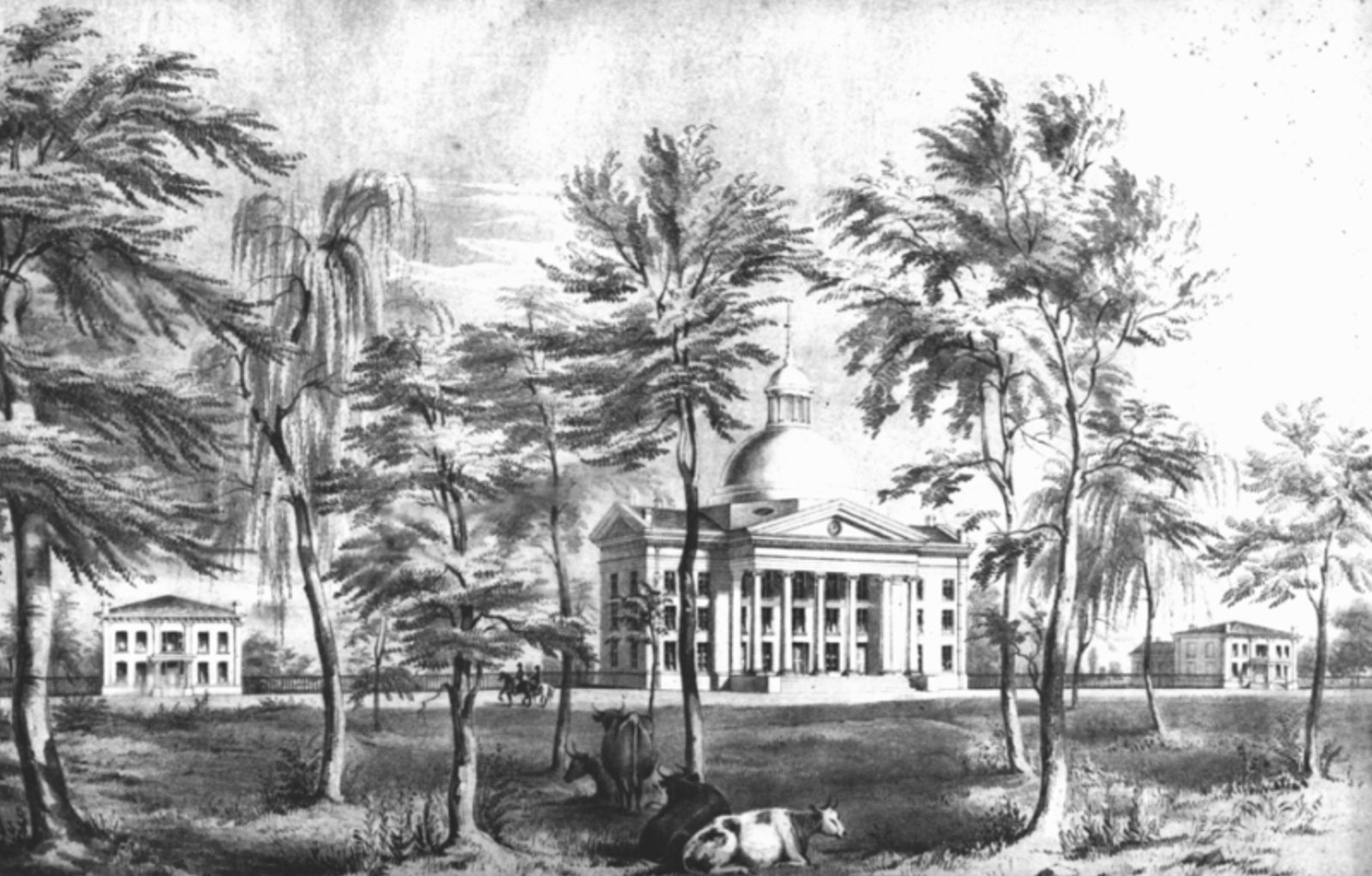
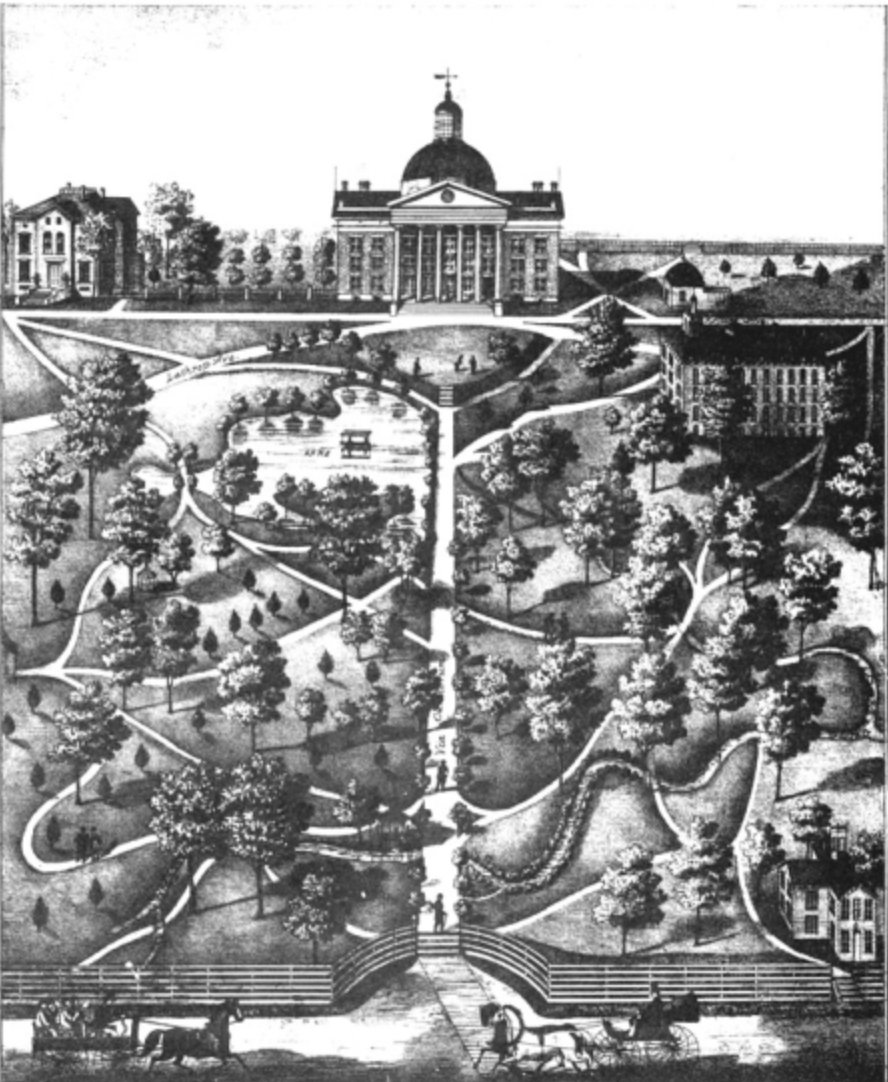
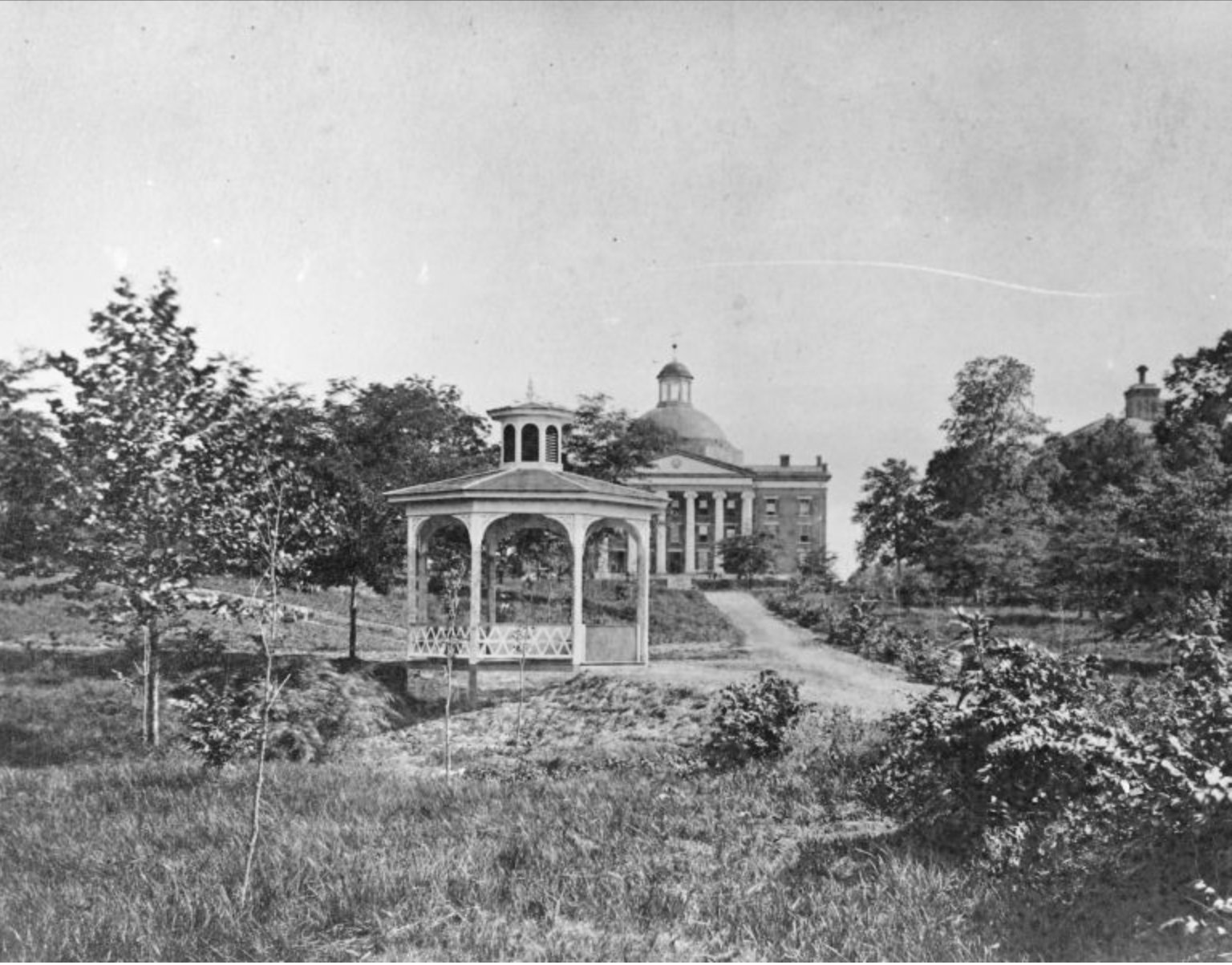
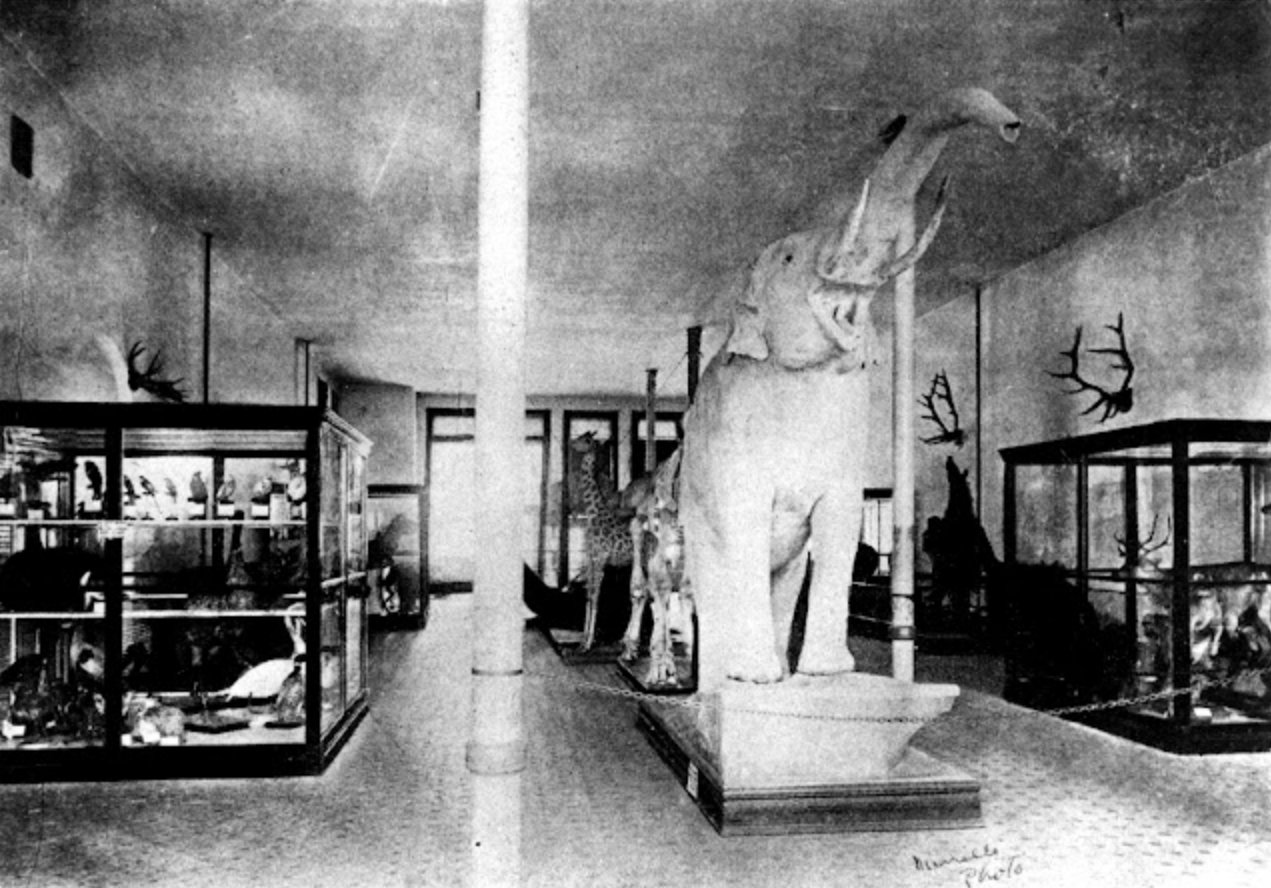
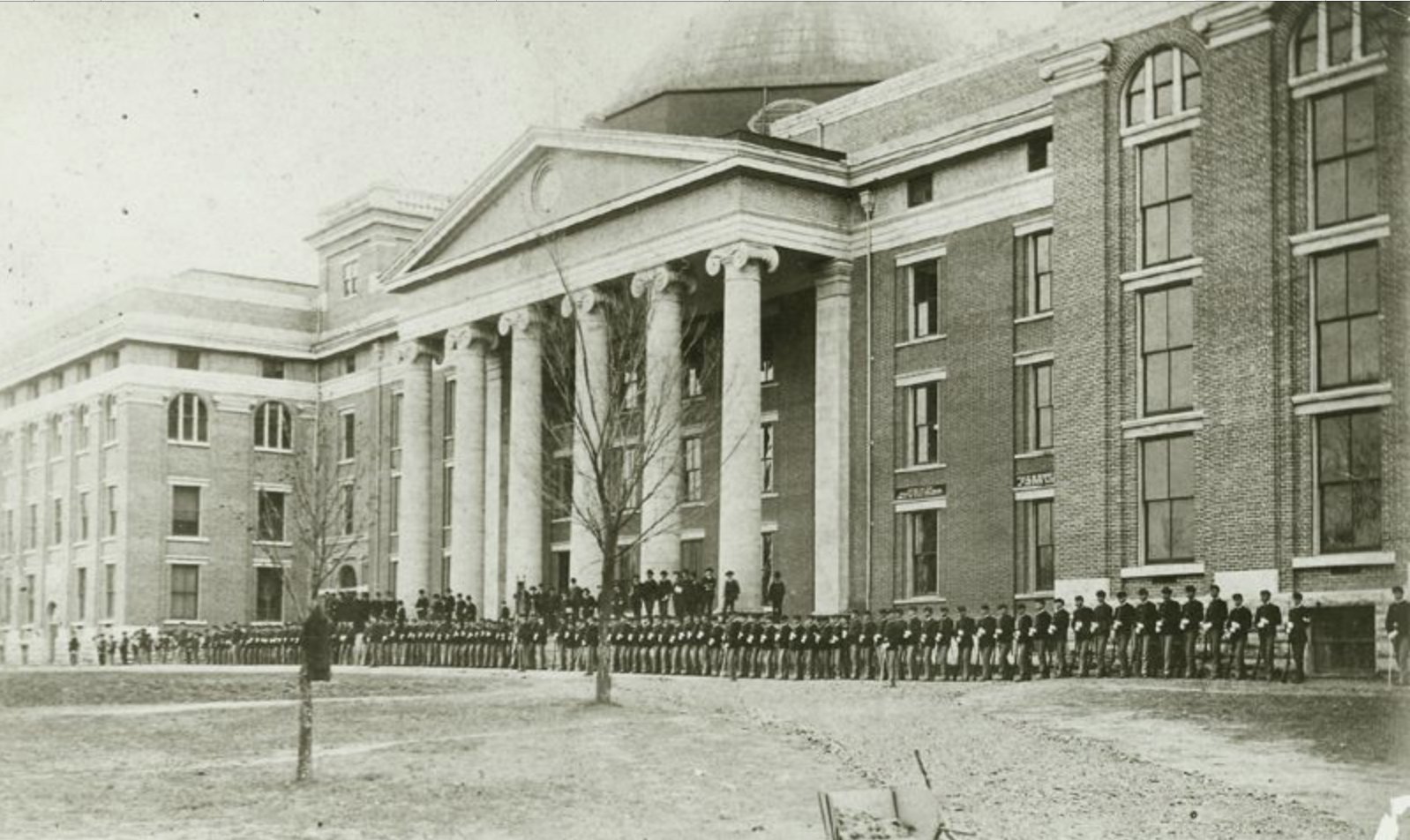

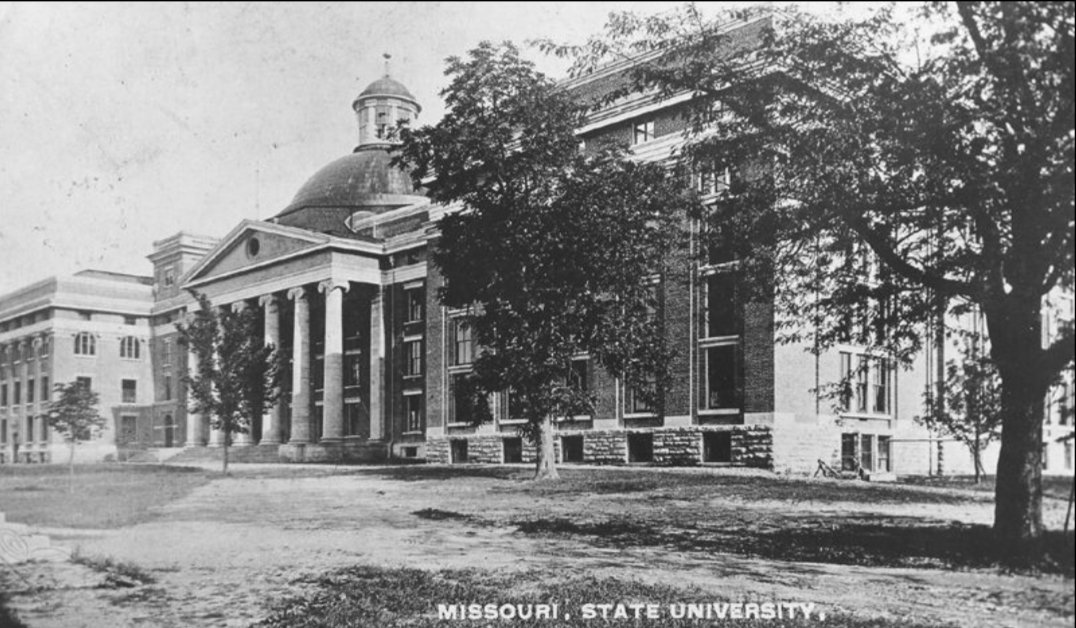

The Fire had many and lasting effects on the State of Missouri and the people of Columbia. A battle began in the State Legislature over moving the university to a different town. An argument over preserving The Columns would result in actual physical violence from the Board of Curators. The Columbia Fire Department would be founded within the decade. And after a near loss to the City of Sedalia, the university would be rebuilt in Columbia using the designs of architect Morris Frederick Bell. Francis Quadrangle and Jesse Hall are named after the Missouri Governor and University President, respectively, at the time of the fire and rebuilding . On the 175th Anniversary of the University of Missouri a retelling of the fire was narrated with projections, lights, and music. To view the spectacular ceremony watch the video below.
The most detailed account of the fire is on pages 92-99 of the first issue of university’s annual yearbook, The Savitar, published in 1895 by the Press of E.W. Stephens in Columbia. Rarely told in full, the whole story is reproduced below from the University of Missouri Digital Library.
Below is a gallery of the few images of the fire and aftermath, from MU in Brick and Mortar and other sources.
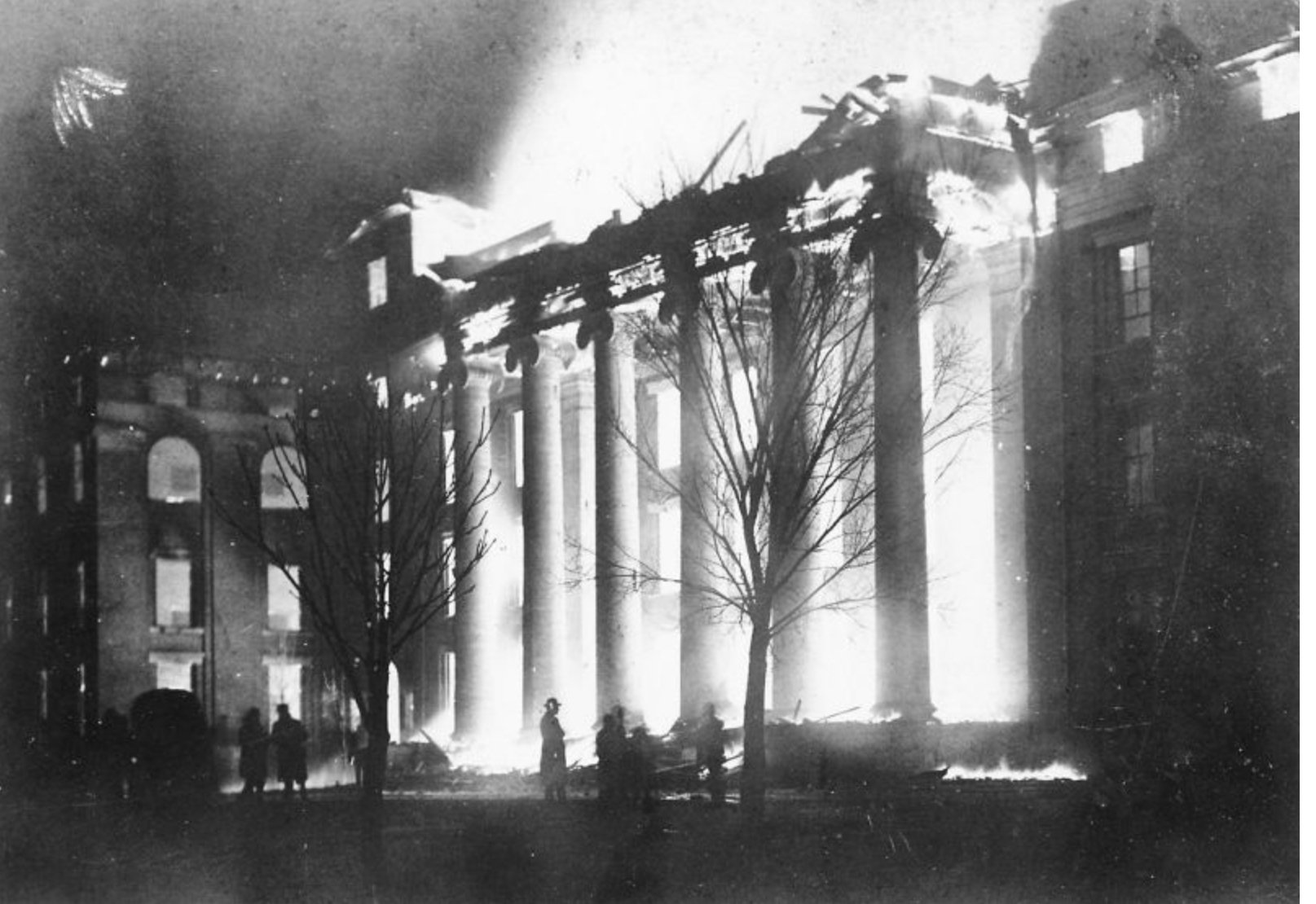



Lauren DeSalvio describes the fate of Emperor the Elephant in her 2016 Missouri Unions’ Public Art Blog:
'“Following the fire, Emperor was displayed in Swallow Hall. Sadly, Emperor eventually began to disintegrate and he was destroyed, but his bones were saved. His remains were found in the attic of LeFevre Hall [around 1980] by Carla Williamson, an archives employee. Today all that remains of Emperor are his two hind legs and they are stored by the Division of Biological Sciences.”
Carla Williamson and Emperor the Elephant in the attic of LeFevre Hall.
Photo by Nick Kelsh. From the blog post of Lauren DeSalvio as reproduced from University Archives (C:1/7/11) and The Columbia Daily Tribune (Sunday August 3, 1980).
Inspired by the loss of important historic buildings like Academic Hall, our group, CoMo Preservation, hopes to help homeowners, landlords, and institutions prevent the destruction of historic architecture. Original period styles might be replicated, but will forever lack the social history of authentic structures. The preservation of historic buildings is necessary for Columbia’s residents, students, and visitors to achieve a sense of place and, it follows, for our city’s continued economic success. If you want to join us in our mission, signup on our mailing list for news and updates.
Sources
Juniors of Missouri State University (1895). The Savitar 1894-1895. Columbia, Missouri: Press of E.W. Stephens. Accessed January 9, 2023.
MU in Brick and Mortar: Academic Hall. Columbia, Missouri: University of Missouri Archives. Accessed January 9, 2023.
DiSalvo, Lauren (December 9, 2016). Academic Hall: Before and After the 1892 Fire. Columbia, Missouri: Unions’ Public Art Blog, Curator of Public Arts, Missouri Student Unions. Accessed January 9, 2023.
MizzouResLife Youtube Channel (September 20, 2014). Lighting the Columns, MU 175th anniversary (full ceremony). Accessed January 9, 2023.
Switzler, William F. (1882). History of Boone County. St. Louis, Missouri: Western Historical Company. p. . OCLC 2881554. Accessed January 9, 2023.
Hills, William Sanford (1906). Thomas Hills (ed.). The Hills Family in America. p. 354-355. Grafton Press. Accessed January 9, 2023.
Pennsylvania Capitol Preservation Committee. Stephen Hills (1771-1844). Accessed January 9, 2023.
Stephens, Frank Fletcher (1962). A History of the University of Missouri. Columbia, Missouri: University of Missouri Press. ISBN 9781258386566.
Olson, James and Vera (1988). The University of Missouri An Illustrated History. Columbia, Missouri: University of Missouri Press. ISBN 9780826206787.
Viles, Jonas The University of Missouri, 1839–1939, E.W. Stephens Publishing Company.
Do you have ideas for future topics? Interested in writing an entry or sharing a photo? Did you notice an error?
Email CoMoPreservation@gmail.com or leave a comment below.









